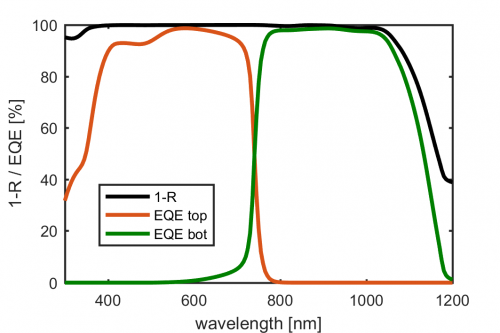KAUST tandem

Mar 12, 2024 Andreas Fell
This example represents the >33% efficient tandem cells of KAUST, as published in:
The example shows how to setup detailed tandem optics by defining optical properties of the top cell layers.

For this detailed modeling of the external optics, Quokka3 uses a simplified raytracing + transfer-matrix-method (TMM) approach, effectively assuming perfectly conformal layers on ideal pyramids, i.e. neglecting wave-optics effects and additional roughness effects. Therefore the asbolute values from optical modeling should not be considered highly accurate. For instance, there is lower bottom cell and higher top cell generation compared to experimental data, resulting in an underestimation of Jsc in this example. But general trends e.g. when varying layer thicknesses will still be of useful accuracy.
A more advanced optical model more accurately representing this cell structure is published in:
This example was created with kind scientific support from KAUST, please consider citing above papers if you publish results based on this example.